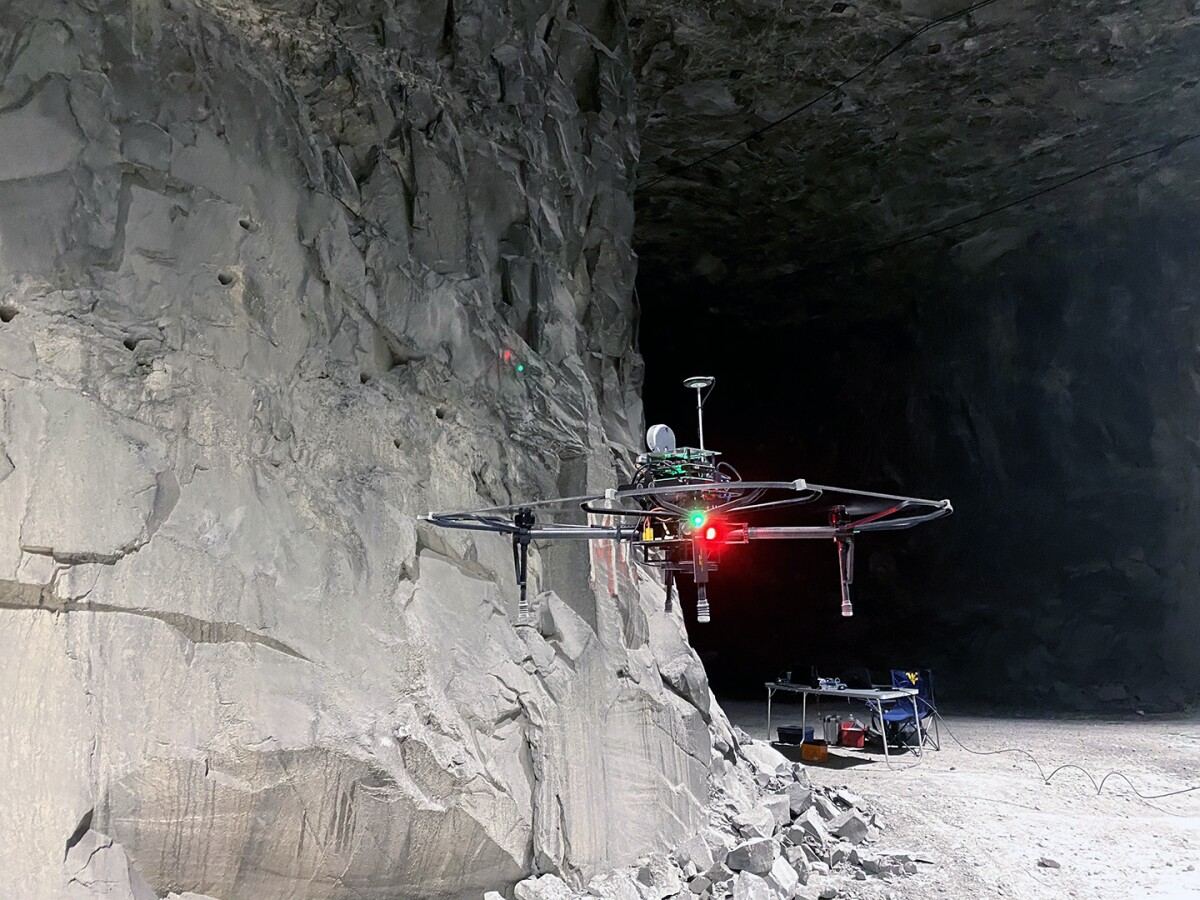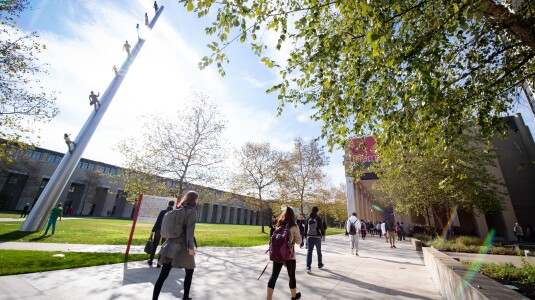When Guilherme A.S. Pereira arrived at the University of West Virginia from his native Brazil in 2018, he was focused on a single, long-term mission: moving prototype robotic concepts from his newly created Field and Aerial Robotics Laboratory into the real world in order to solve practical but complex commercial challenges. Under Pereira’s guidance, the lab is researching fundamental challenges facing ground and aerial robots as they operate in unknown and unstructured environments.

After 15 years teaching electrical engineering and computer science at Universidade Federal de Minas Gerais in Brazil, Pereira’s passion for robots led him to Morgantown where officials at WVU’s Department of Mechanical and Aerospace Engineering were envisioning robotics as a strategic growth area. There, as an associate professor, he would have a chance to push the field forward by tackling some of the fundamental obstacles accompanying the emergence of autonomous robots working alongside humans in the natural world.
For Pereira, Morgantown offers an ideal landing spot for his life’s work. He grew up in Minas Gerais, a mountainous region in southeast Brazil. He was fascinated by technology as a young student, taking electronics courses and tinkering with computers. He became fascinated by robots as an undergraduate and joined a robotics club to create soccer robots for competitions. After completing a master’s degree in robotics, he embraced the field.
Using robots to help people
While teaching at the university in Brazil, Pereira took a sabbatical in 2015 as a visiting scholar in the Robotics Institute at Carnegie-Mellon University in Pittsburgh. It was there that he decided it was time to permanently relocate to the U.S. WVU had several openings in robotics and when WVU’s Department of Mechanical and Aerospace Engineering offered him a post, he jumped at it.
In West Virginia, Pereira discovered a field experiment waiting to happen.

Famed for its coal mining industry, the state also mines 10 million tons of limestone each year. These mines are much larger and, Pereira noted, can be more dangerous than coal mines. Big trucks move about inside the mines, and the pillars that hold up the ceilings and walls must be inspected regularly for cracks and other damage that can lead to collapse.
Pereira and his students created a prototype of a robotic ground vehicle tethered to a drone to handle these dangerous tasks.
Pereira noted that those safety concerns mean robots are a better fit in some instances. His group has been in contact with some mining companies, as well as the university’s mining department, hoping to turn its prototype into a working model.
In addition, nearly 80 percent of West Virginia is covered by forest, and while the threat of fire is less common relative to western US forests, there are major problems created by invasive species of insects and plants. The team is creating a prototype of an autonomous robotic drone that can maneuver around the daunting mazes of trees and brush. Robotic inspection drones, zipping around the forest, searching for unwanted bugs and flora, is a goal, but it requires flawless navigation technology in a dynamic environment.
Using simulation, the lab is focused on trying to specify the trajectory of drone robots so they can navigate safely in the forest or inside mines, to avoid obstacles and people.
The rise of autonomous robots
Autonomous mobile robots have already staked a vital place in industrial applications, from manufacturing to transportation and delivery. These robots require frequent human interaction in order to program them to adapt to changing environments as well as keeping them charged and running. Put simply, the challenge of designing a way for robots to work autonomously is a daunting one.
One of the things we are trying to do is get data from an environment, and do very, very fast processing, so the robot can detect and avoid obstacles.
“Having robots working without human direction, for several days or weeks or years, is something we are worried about,” Pereira said. “The problem is that for a robot working long-term, say days at a time, the environment will change. Over years, the environment will change even more. In the forest, you will have plants and trees growing, seasonal changes, sometimes snow, sometimes sunshine, sometimes rain. And indoors, furniture gets moved around, people will be moving around, even other robots will present obstacles.
“If a robot recognizes a chair and table, it will know it’s in the dining room, for example. If that changes, the robot will have a rough time localizing itself and figuring that out.”
Pereira identified two key areas that required attention. For robots to work autonomously for long periods in changing environments, such as forests or mines, or anywhere where people are living and working, they must be able to adapt instantly. In order to do so, a massive amount of data must be processed in real time, something that is too compute-intensive to be done locally on the robot itself. So Pereira decided to focus his research on parallel and cloud computing, specifically mapping and motion planning, as a blueprint for building such robots.

By using the cloud, where there is an abundant supply of memory and processing power, maps of a changing environment can be pre-processed from the flow of data and transmitted to a robot in action. And computation aimed at plotting a robot’s motion using new motion planning algorithms can be done much faster in parallel with a robot’s CUDA-based on-board computer. CUDA (Compute Unified Device Architecture) is an inexpensive parallel computing platform and application programming interface.
“One of the things we are trying to do is get data from an environment, and do very, very fast processing, so the robot can detect and avoid obstacles,” Pereira explained.
Amazon Research Award
In 2019, Pereira received an Amazon Research Award for “Parallel and Cloud Computing for Long-Term Robotics.” The funds supported his research, and allowed him to add a PhD student, to help launch the project. The award also introduced his lab to Amazon Web Services (AWS), making his project the first one in his group to effectively apply cloud computation.
Everything I do is about having robots, not to replace people, but augment them, to help people with the kinds of repetitive tasks that robots can do better than people.
Pereira worked closely with Vamshi Konduri, an AWS senior solutions architect for robotics. Konduri’s team provides solutions and services to help customers build robotics equipped with capabilities such as critical intelligence, data/video processing, and analytics.
“The strategy that Guilherme was proposing in the research required tools to connect robots to the cloud, process data, and leverage smart computing capabilities, all of which AWS was well poised to provide with the breadth and depth of services we have to offer,” Konduri said.
Konduri was impressed with Pereira’s efforts. “He is forward thinking with pragmatic but cutting-edge research ideas,” Konduri said. “He is leveraging the progress and trends in other areas such as cloud computing.”
Pereira has embraced the challenges he sees in the future of his work. “One thing I eventually want to see are robots operating closely with people, working together,” Pereira said. “That is very hard to do now.”
“The big challenge is to make those robots intelligent in a way that people will be safe near them and the robots will actually help them,” he said. “I see robot farmers, delivery robots working for Amazon, robots you can trust to move among people. Everything I do is about having robots, not to replace people, but augment them, to help people with the kinds of repetitive tasks that robots can do better than people.”


















